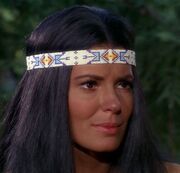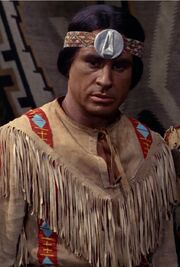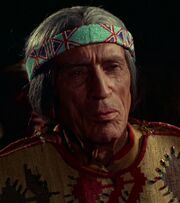While corresponding with a prominent comics blogger recently, our discussion drifted towards the imminent release of The Best American Comics Criticism of the 21st Century. He made the suggestion that it might become “a yearly thing, in the style of Houghton Mifflin’s Best American series, tracking the 21st century as it moves forward”. Now I don’t think this rumor is accurate in any way (not least because there are no other sources backing this claim up) but I was incredulous for an entirely different reason. Quite simply, there simply isn’t enough good comics criticism to fill a book on an annual basis. You might be able to fill a book once every 5-10 years but certainly not more often than that.
Now I’ve been know to write some reviews in my lifetime so I’m essentially lumping myself in that pool of mediocrity called “comics criticism”. I’m approaching this, however, from the perspective of a person who is a reader first and foremost – a reader who is just about lazy enough to want to rely on the hard work and intelligence of others for a deeper understanding of comics.
In this spirit, I decided to make a short analysis of the reviews available for one of the “big” books from 2008 – Dash Shaw’s Bottomless Belly Button (BBB). There’s nothing remotely scientific about the following survey. I’m merely trying to reproduce the experience of a reader trying to find out more about a comic after having read it. From the perspective of an occasional comics reviewer, such an exercise is not without its benefits as the articles I’ve encountered mirror the deficiencies in my own writing.
I’ve chosen BBB quite deliberately. As one of the “biggest” and most talked about books of 2008, one would expect a reasonable amount of quality reviews around which to crystallize readers’ thoughts. I hardly expect a critic to devote acres of space to ascertain the merits of an insignificant work but this label simply doesn’t apply to BBB.
It has to be said that most comic reviews and articles aren’t written with needs such as my own in mind. Rather, they’re aimed at readers in search of much more basic guidance: to read or not to read; to buy or not to buy.
Most readers aren’t interested in the inner mechanics of comics or the layers upon layers of meaning an artist imbues his work with. In other words, the very things a good cartoonist wrestles with on a daily basis. Most aren’t even interested in well argued, detailed essays debating the merits of a work. To most readers, comics are momentary diversions hardly deserving of this the kind of attention. Another group of readers find reviews entirely useless, preferring to rely on their own brilliance to pierce any semblance of a veil. Needless to say, this blog entry is not meant for persons such as these.
The web is perceived (not entirely without reason) as the province of ephemera directed at short attention spans. That the vast majority of reviews of BBB amount to little more than a short description and recommendation should come as no surprise. I count among these the reviews at Entertainment Weekly, the Hip Librarians Book Blog, infibeam and
The well known
“Yet that disparity between the roughness of the art and the maturity of the story—not for children! the book’s spine reads, alongside Shaw-penned faces of crying tots—lends Shaw’s work an emotional jolt that’s sometimes absent from the work of other graphic novelists, even those as acclaimed as Ware and Clowes.”
On second thoughts, perhaps it’s not so much adulation as clutching at straws.
Well argued negativity is also in very short supply. An article at the Inkwell bookstore has some embryonic antagonism in relation to BBB but does so in passing while reviewing Ariel Schrag’s Likwise. The writer at
“My problem is with how the boring “cartooning” style is privileged as artistic and honest in comics, the same way Hemingway’s writing style used to be in literature. The same way, arguably, that literature now privileges boring “realistic” subject matter. Unfortunately, in Bottomless Bellybutton, Mr. Shaw is guilty of drawing in a boring style…”
And later:
“It is a credit to the modest, weirdly involving art and writing in Bottomless Bellybutton that, despite all these problems, I didn’t realize it wasn’t very good until I was about halfway through.”
The entire experience is not unlike wandering through the arguments of a petulant child.
The New York Times is not much better. Here’s exhibit A:
”Though there’s plenty to enjoy in “Bottomless Belly Button” – realistic dialogue, an emotional connection to the characters, some wonderful flourishes in the layout – it seems wrong to delve too far into those elements before pointing out another major ingredient: nudity. The book’s spine has a “not for children” label and a drawing of six young faces overlaid with X’s – quite appropriate, because some of the interior illustrations merit a triple-X rating. The images run from the mundane to the racy to the positively, well, graphic. Perhaps the use of nudity is a budding trend in graphic novels.”
I understand the limitations imposed by writing about comics for a mainstream publication – the need for evangelical zeal and a sensitivity for reader’s of a more puritanical nature – but this reads too much like a blast from the “Comic aren’t for kids anymore!” past. I imagined a nun at the keyboard before the writer started proclaiming a fondness for the decompression used by Brian Michael Bendis in Ultimate Spider-Man. I can’t imagine a nun liking Ultimate Spider-Man. I certainly can’t conceive of any nun labeling Y: The Last Man “exquisite” as the NYT writer does. Nuns have better taste than that. The less said of this travesty of a review the better.
Derik Badman
The single best article on BBB available on-line is in all likelihood one of the least read – Charles Hatfield’s article at Thought Balloonists. This isn’t even Hatfield at the top of his game – it’s merely a long entry for his blog, written with some degree of thought and planning of course but not with the rigor of one of his academic articles or published reviews. It’s a clear, methodical discussion of the themes, mechanics and deficiencies of BBB. Hatfield has been doing this for years and it shows even in the most casual of his writings.
One good review of BBB out of dozens – a sad testament to the state of comics criticism by any measure. For the sake of comparison, I urge you to do the most basic search for reviews of any prominent work of literary fiction – a recent one if need be if only to give a small edge to comics-related reviews (Thomas Pynchon’s latest novel Inherent Vice. Even in a critical scene notorious for incestuous relationships and glad-handing the difference in quality is sobering. Comics criticism has a long, long way to go – certainly before it satisfies my most basic needs as a reader.




